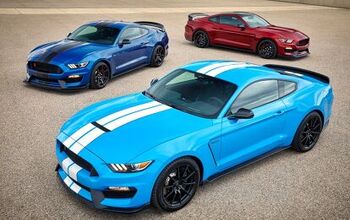Will Nokia's "Terminal Mode" Let Cars Be Cars Again?
With the proliferation of in-car connectivity systems like SYNC, MyLink, MyFordTouch, Blue&Me, etc, the ability of a car to play MP3s, read out text messages and update social media accounts has surpassed such traditional attributes as power, efficiency and handling for many car buyers. And though many of these OEM-branded systems are underpinned by identical software architectures from Microsoft or Garmin, they are taking an ever-more important place in the marketing of new cars. Differentiating these differentiators, then, takes a huge amount of development effort on the part of automakers and their suppliers, and the result is another electronic system with the potential to go out of date with the same speed as a cellular phone. Wouldn’t it be smarter to just create an open-standard connection between your phone and your car so that you don’t need to replace your car when its onboard connectivity electronics go out of date? That’s the goal of the Car Connectivity Consortium, which is aiming to explode the OEM-branded in-car connectivity model.
SeungHoon Lee, vice president of the Convergence Lab at LG Electronics CTO Division, tells CNet
Vehicles are evolving to be a ‘living space,’ with cutting-edge technology applied. But the life cycle of a built-in car AV system is difficult to match with such fast-moving trends and developments in CE/IT products.
But this isn’t just about keeping pace with technology, it’s about reclaiming the car as a transportation tool rather than a cell phone on wheels. Which is not to say that this standard is a cure for distracted driving… quite the contrary. No, the promise of this standard is more basic than that: it simply creates a logical division of labor. Cars are for driving, phones are for communicating. If society deems it safe to use both devices simultaneously, this standard will allow that. But it will also force car makers to stop seeing themselves as purveyors of “the connected lifestyle” and keep their focus on making cars as good as possible for the (still important) job they were built to do. You know, driving…
More by Edward Niedermeyer
Latest Car Reviews
Read moreLatest Product Reviews
Read moreRecent Comments
- Cprescott Jeep has become fool's gold - thinking they can move this brand upmarket and charge outrageous prices without regard to keeping track of market conditions.
- Chiefmonkey Did these have the same security/theft problem that other Kias have? lol
- Tane94 Not New Jersey, that's for sure!!
- Syke Hopefully they do consider the American market, as I'll be looking at trading in my current Bolt sometime in '25 or '26, and we've had a long good experience with Kia products. Given what GM is currently promising, I'll be looking at Kia well before any upcoming GM product.
- Jkross22 Full self drive - lol, Tesla isn't immune from naming things that are the opposite of what they are and what they do.

































Comments
Join the conversation
Terminal mode is an open standard. Nokia isn't getting any money out of it that I can see, though they should have a slight advantage being most familiar with it. Based on the whole symbian/wm7 platform switch, I doubt they have many people or dollars devoted to it. Terminal Mode is much more about the communication layer and data sharing, and less about vehicle integration (HUD) or mirroring. To develop a TM app, you end up creating two interfaces to the underlying data: the phone version and the car version. The car version has different resolution, readability, and operability requirements so only the truly lazy developers will mirror. And TM adds in the flag to wall off parts of the UI while car is in motion. A pitfall here is the auto makers desire to certify the apps that will run in their car, which will make most any developer cry when they have to certify the same app a dozen times. I predict that TM or some competitor will take off, but over the next decade, as the auto industry is still slow on the uptake of technology. Autp makers shipping cars with real time data are paying for the cellular data connection (FM traffic excepted) or passing it on to the customer (OnStar). TM eliminates that ongoing cost to the manufacturer, especially while consumers are expecting more and more real-time data e.g. restaurant reviews from yelp when they search for place to eat on the nav. The wrench in the works is that the telcos really want to charge you for each device you have that has a data connection: your phone, tablet, car, shoes, fridge, etc and for each novel use of the data connection: tethering vs on-device data.So, it will be interesting to see how far they can take it, as the electronics industry is pushing out more talkative devices that want to keep each other informed via the cloud.
AS far as connected cars, I'm probably with Murilee on that